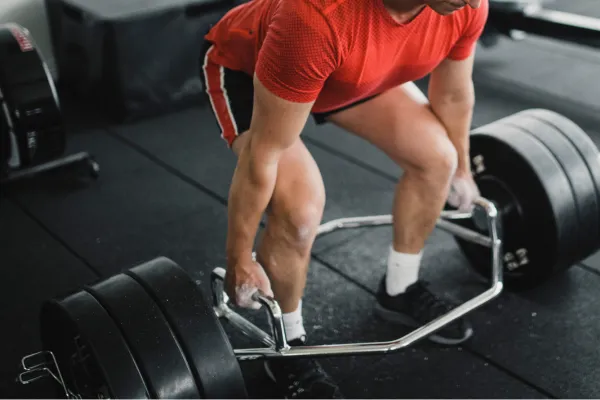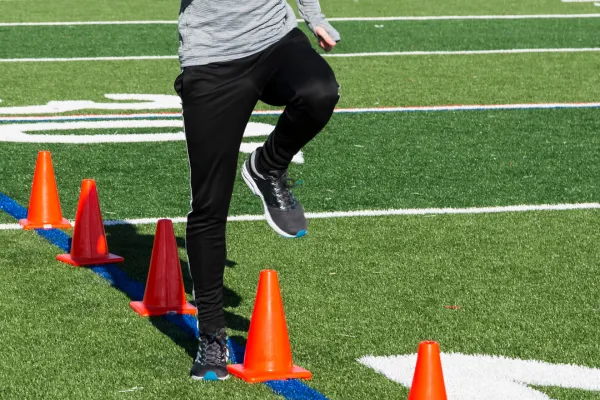
Bridging the Gap: Transitioning Athletes Through the LTAD Stages
Bridging the Gap: Transitioning Athletes Through the LTAD Stages
Long-Term Athletic Development (LTAD) is a proven, science-based framework designed to help young athletes grow stronger, perform better, and stay injury-free throughout their sports career. It balances training with an athlete’s physical and mental development by considering biological age (maturity level) alongside chronological age. Unlike old-school training, which focused mostly on movements in the sagittal plane (forward/backward), LTAD stresses the importance of training in all three planes — sagittal, frontal (side-to-side), and transverse (rotational). How much emphasis goes on each plane depends on the sport (Lloyd and Oliver 12).
Building the Base (Ages 6–12)
At this stage, kids develop fundamental movement skills such as running, jumping, throwing, and basic coordination. Training should be fun, reaction-based, and game-like to keep kids engaged and prevent burnout. Drills start “closed,” with predictable movement patterns like running straight from point A to point B, then gradually become “open,” where kids must react to unpredictable situations — mirroring the unpredictability of real games. This builds agility, decision-making, and quickness naturally (Faigenbaum et al. 165).
Exercises with little weight and more control promote coordination and strength without risking growth plate injuries. Coaches should focus on teaching proper technique early, especially in multi-planar movements, to set a solid foundation (Lloyd and Oliver 14).
Navigating Puberty (Ages 12–15)
During puberty, athletes experience rapid growth that affects strength, coordination, and biomechanics. For example, a squat learned pre-puberty may change as joint range of motion and limb length adjust. This can temporarily disrupt movement quality and increase injury risk. Training focuses on eccentric control — strengthening muscles as they lengthen — which helps stabilize joints during this vulnerable phase.
Girls often hit puberty earlier, so coaches should individualize plans accordingly. Keeping training positive, exciting, and movement-focused is crucial to maintain motivation and foster mental toughness (Faigenbaum et al. 168; Lloyd and Oliver 15).
Training with Purpose (Ages 15–18)
High school athletes generally train with more purpose and intent — the progress itself becomes their motivation and reward. While some have faced plateaus in strength or skill, so programs need to be carefully managed to continue growth without injury.
This is where advanced methods like French contrast training or velocity-based exercises come into play, building power on a strong strength base. But it’s critical to remember the principle: “You can’t fire a cannon from a canoe.” If an athlete’s foundation isn’t solid, heavy power training will be ineffective or even harmful (Suchomel et al. 103).
Recovery strategies like deloading and listening to the body become essential to avoid burnout and overtraining (Faigenbaum et al. 170).
Sport-Specific Specialization (Ages 18–22)
College athletes tend to have a clear focus and a well-established base. Training shifts to specialization, emphasizing the specific demands of their sport. This includes dialing in on the right planes of movement — for example, a baseball player may focus more on rotational power (transverse plane), while a football player emphasizes linear and frontal plane movements.
Programs incorporate advanced strength and power exercises, with individualized coaching cues to optimize performance and reduce injury risk. Mental toughness and recovery also remain key factors at this stage to sustain high-level competition (Lloyd and Oliver 18).
Why LTAD Works
Progression: Gradually increasing training intensity matches an athlete’s growing strength and skill (Lloyd and Oliver 12).
Individualization: Training adjusts for biological age, gender, and sport demands (Faigenbaum et al. 165).
Movement Quality: Training across all planes builds balanced athleticism and reduces injury risk (Suchomel et al. 103).
Mental Toughness: Focused training develops resilience, confidence, and coachability (Anthony et al. 315).
Injury Prevention: Strength, movement screening, and recovery protocols lower injury rates (Case et al. 149).
Research consistently shows athletes who follow LTAD guidelines improve performance, reduce injury risk, and sustain long-term participation in sport (Faigenbaum et al. 169).
Read more articles by Coach Brady Hill
The LTAD Model: A Quick Guide for Coaches and Parents
For more information on athletic development, the IYCA Certified Athletic Development Specialist is the gold-standard certification for anyone working with athletes 6-18 years old.
The course materials were created by some of the most experienced and knowledgeable professionals in the industry, and the content is indisputably the most comprehensive of any certification related to athletic development. Learn more about the CADS certification here:
Resources
Anthony, David R., et al. “Mental Toughness in Sport: Motivational Antecedents and Associations with Performance and Psychological Health.” Journal of Sports Sciences, vol. 42, no. 4, 2024, pp. 310–320.
Case, Michael J., et al. “Relative Strength and Injury Risk in Collegiate Athletes.” Journal of Strength and Conditioning Research, vol. 34, no. 1, 2020, pp. 145–152.
Faigenbaum, Avery D., et al. “Youth Resistance Training: Updated Position Statement Paper from the National Strength and Conditioning Association.” Journal of Strength and Conditioning Research, vol. 23, no. 5, 2009, pp. 160–172.
Lloyd, Rhodri S., and Jon L. Oliver. “The Youth Physical Development Model: A New Approach to Long-Term Athletic Development.” Strength and Conditioning Journal, vol. 34, no. 3, 2012, pp. 10–20.
Suchomel, Timothy J., et al. “The Importance of Muscular Strength in Athletic Performance.” Sports Medicine, vol. 46, no. 2, 2016, pp. 100–115.








